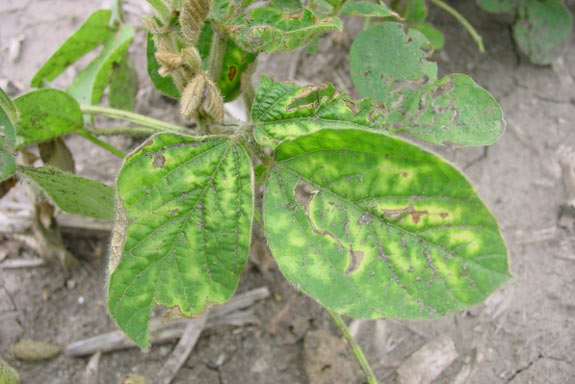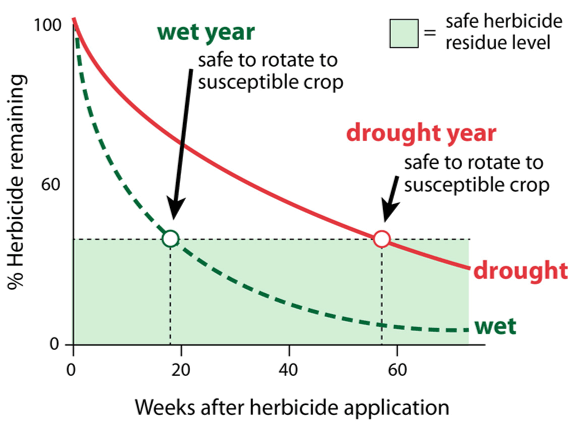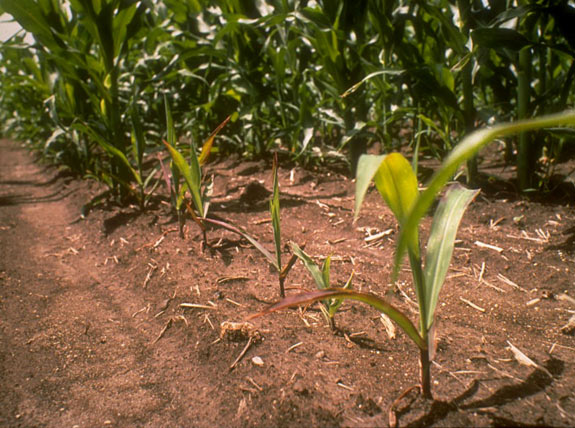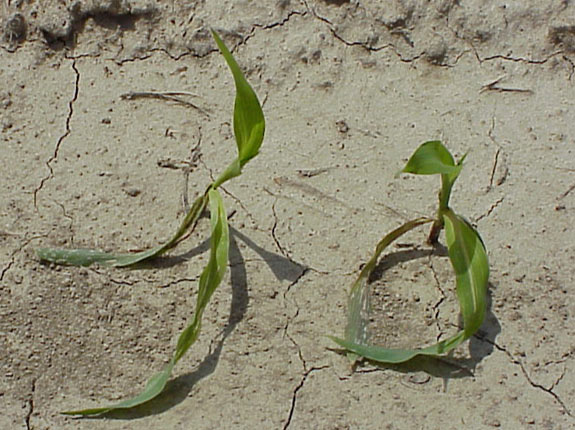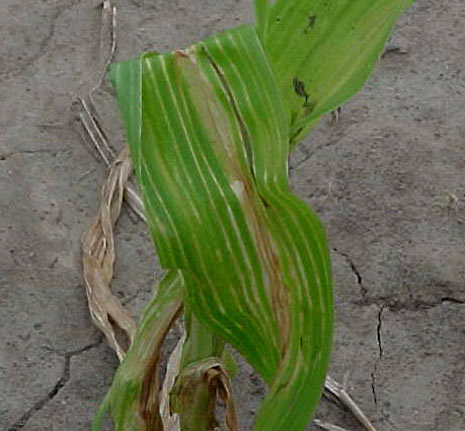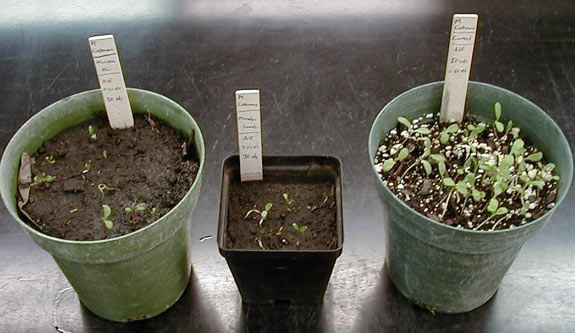Pioneer® brand Optimum® AQUAmax® corn hybrids were developed to deliver a yield advantage, rain or shine. These corn products offer improved performance in water-limited conditions and have been tested in multiple drought testing locations over multiple years.
See the ProductsTable 1. Carryover risk to corn, soybeans, cotton, and sugarbeets for several commonly used herbicides. Risk may be higher in drought conditions.
| MOA/ Family |
Active Ingredient |
Primary Dissipation Mode |
Risk for Carryover Injury the Year After Application to1: | |||
|---|---|---|---|---|---|---|
| Corn | Soybean | Cotton | Sugarbeets | |||
| EPSPS | glyphosate | adsorption, microbial | very low | very low | very low | very low |
| GS | glufosinate | microbial | very low | very low | very low | very low |
| ALS/IMI | imazaquin | microbial | high2,3 | very low | high4 | high4 |
| ALS/IMI | imazethapyr | microbial | moderate | very low | high4 | high4 |
| ALS/SU | chlorimuron | chemical, microbial | low to moderate5 | very low | low | high4 |
| PSII | atrazine | microbial | very low | high6 | low | high4 |
| PSII | metribuzin | microbial | low | low | high4 | high4 |
| PPO | fomesafen | microbial | moderate | very low | very low | high4 |
| PPO | flumioxazin | microbial | low | very low | low | moderate7 |
| PPO | saflufenacil | microbial | very low | low | low | low |
| PPO | sulfentrazone | microbial | low | very low | moderate8 | high4 |
| HPPD | mesotrione | microbial | very low | moderate9 | low | high4 |
| HPPD | topramezone | microbial | very low | low | low | high4 |
| HPPD | tembotrione | microbial | very low | low | low | high2 |
| HPPD | isoxaflutole | microbial | very low | low | high4 | high2,3 |
| Auxin | 2,4-D | microbial | very low | very low | very low | very low |
| Auxin | dicamba | microbial | very low | very low | very low | very low |
| Auxin | clopyralid | microbial | very low | moderate2 | high4 | very low |
1See product labels for details.
2Label states planting interval depends on amount of rainfall received after application and/or soil organic matter content.
3Label requirements differ for regions.
4Label prohibits planting the year following use.
5Low at pH < 7-7.5, moderate at pH >7-7.5. See label for details.
6Varies with region, use rate, and soil characteristics. See label for details.
7Depends on use rate.
8Label requires 12-month planting interval.
9Label restrictions in place if mesotrione applied twice to corn the previous year.
Read and follow all herbicide label instructions.
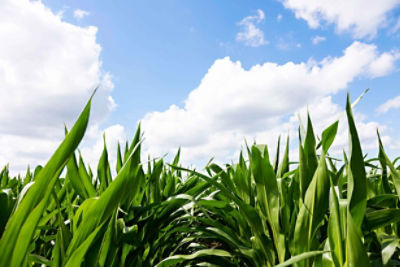

Why Dry Conditions Increase Risk of Herbicide Carryover
Get the facts about how herbicides break down in both moist and drier soil - and when to watch out for herbicide carryover.
Learn More

AQ – Optimum® AQUAmax® product. Product performance in water-limited environments is variable and depends on many factors, such as the severity and timing of moisture deficiency, heat stress, soil type, management practices and environmental stress, as well as disease and pest pressures. All products may exhibit reduced yield under water and heat stress. Individual results may vary.
The foregoing is provided for informational use only. Please contact your Pioneer sales professional for information and suggestions specific to your operation. Product performance is variable and depends on many factors such as moisture and heat stress, soil type, management practices and environmental stress as well as disease and pest pressures. Individual results may vary. Pioneer® brand products are provided subject to the terms and conditions of purchase which are part of the labeling and purchase documents
